While it may seem unusual, there are indeed birds that resemble bats in appearance and behavior. The most notable among these are the species of Caprimulgiformes, which includes nightjars, nighthawks, and whip-poor-wills.
These birds have large eyes and mouth for catching insects, much like bats, and are most active during twilight hours, contributing to their bat-like image.
Key Takeaways:
Caprimulgiformes, including nightjars, nighthawks, and whip-poor-wills, are bird species that closely resemble bats.
These birds have similar features to bats such as large eyes and mouths for effective insect hunting.
They are most active during twilight hours, just like bats, further adding to their bat-like image.
Birds That Look Like Bats
Swifts:
Common Swift
Chimney Swift
Nightjars:
Common Nighthawk
Swallows:
Barn Swallow
Waxwings:
Cedar Waxwing
Flycatchers:
Black Phoebe
Kingfisher –
Belted Kingfisher
Common Swift
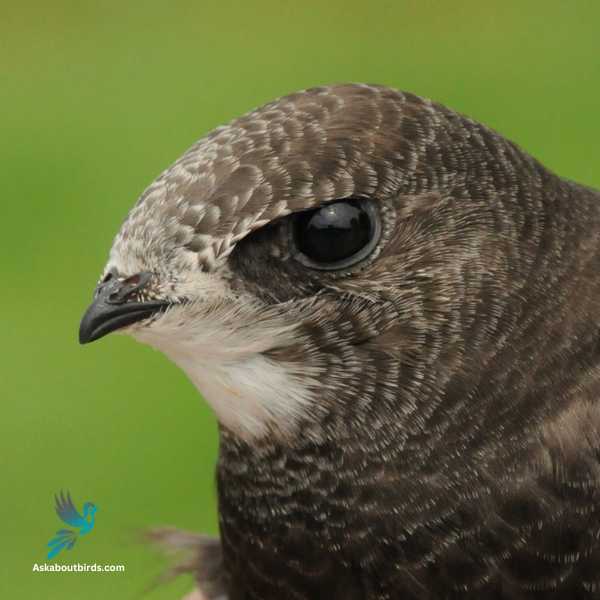

| Feature | Measurement |
|---|---|
| Scientific Name | Apus apus |
| Length | 6.3–6.7 in |
| Wingspan | 15–16 in |
| Weight | 38 grams |
The Common Swift is a remarkable bird known for its extraordinary flying abilities. It’s found across Europe and Asia and migrates to Africa during the winter. The Common Swift’s body is adapted for life in the air, with a slender body, long, scythe-like wings, and a short, forked tail. It’s mostly dark brown, appearing almost black against the sky. These birds feed on flying insects and spiders that they catch in their beaks during flight.
They are also known to sleep and even mate while airborne. Their nests are typically located high up on cliffs or buildings, and they land only to breed. The Common Swift’s call is a characteristic screaming sound, often heard in large groups during the summer evenings. Their incredible aerial lifestyle and high-speed flight make them a joy to observe.
Chimney swift
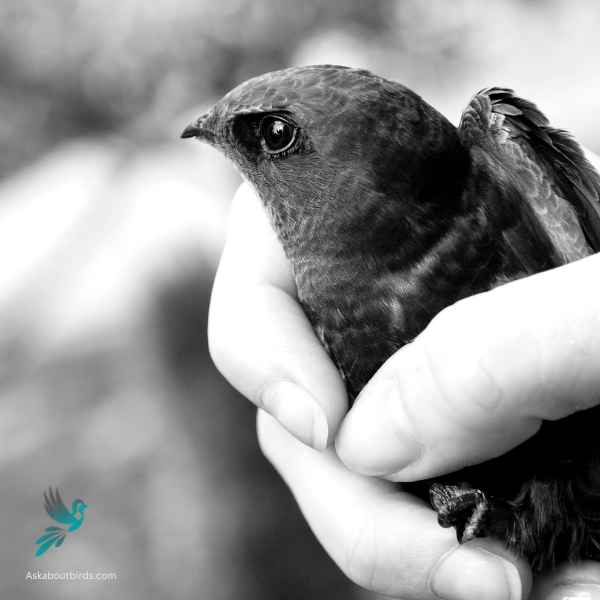
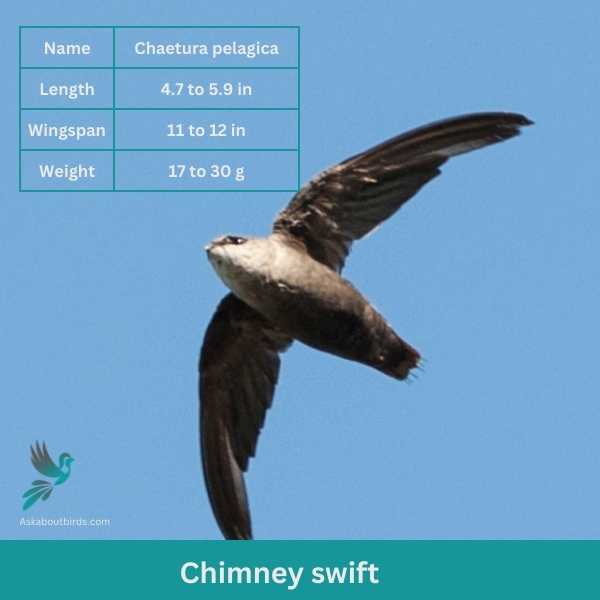
| Feature | Measurement |
|---|---|
| Scientific Name | Chaetura pelagica |
| Length | 4.7 to 5.9 in |
| Wingspan | 11 to 12 in |
| Weight | 17 to 30 g |
The Chimney Swift is a small bird native to the Americas, recognized for its acrobatic flight and distinctive, chattering calls. It is nearly entirely aerial, spending the majority of its life in the sky. With its cigar-shaped body, long, curved wings, and short tail, it is superbly adapted for flight. The Chimney Swift feeds primarily on flying insects and spiders, which it catches in midair.
As the name suggests, this bird frequently nests and roosts in chimneys, as well as in hollow trees and similar structures. They are capable of clinging vertically to surfaces, thanks to their specialized tail feathers and strong feet. The Chimney Swift migrates over long distances, traveling from North America to the Amazon Basin in South America for the winter. Their numbers have been declining, partly due to the reduction in suitable nesting sites as old chimneys are capped or torn down.
Common nighthawk

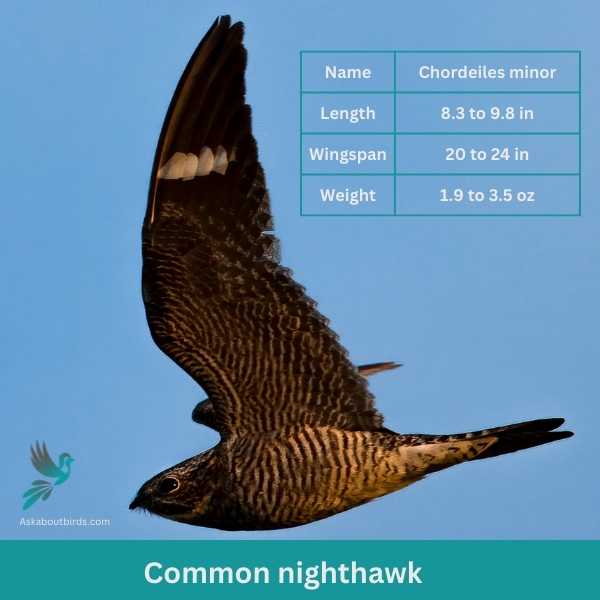
| Feature | Measurement |
|---|---|
| Scientific Name | Chordeiles minor |
| Length | 21 to 25 cm (8.3 to 9.8 in) |
| Wingspan | 2051 to 61 cm (20 to 24 in) in |
| Weight | 55 to 98 g (1.9 to 3.5 oz) |
The Common Nighthawk is a nocturnal bird found throughout North and Central America. Despite its name, it’s not a hawk but is a part of the nightjar family. This bird is known for its unique “booming” sound made by air rushing through its wings during its courtship dive. It has a cryptic appearance with mottled gray and black feathers, making it well camouflaged during the day when it roosts on tree branches or on the ground. The Common Nighthawk has long, pointed wings with a distinctive white bar near the tip. It feeds on insects, which it catches in flight with its wide, gaping mouth, often at dawn or dusk. This bird is a ground nester, laying its eggs directly onto gravel or bare soil. The Common Nighthawk is known for its spectacular aerial displays and can often be seen flying in the evening sky in urban areas.
Barn swallow
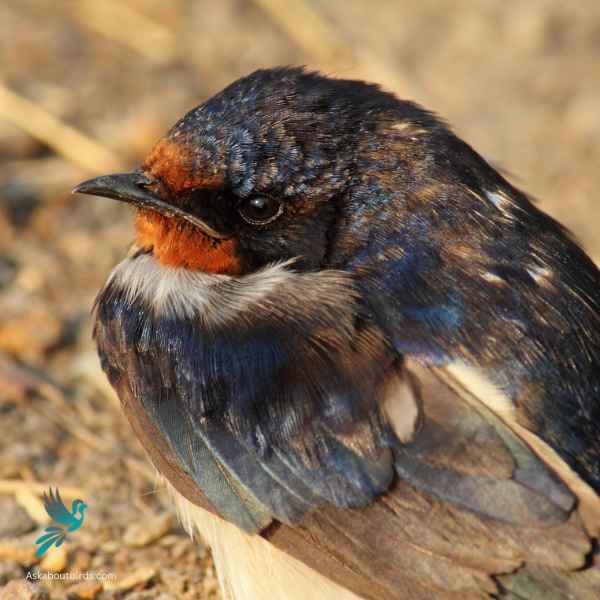
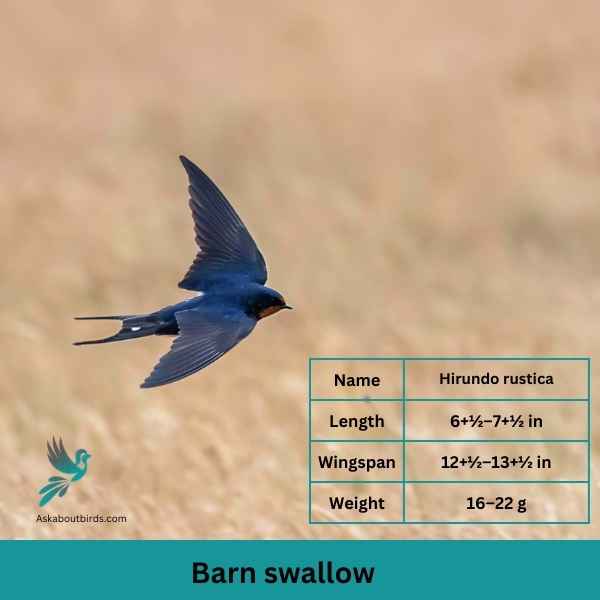
| Feature | Measurement |
|---|---|
| Scientific Name | Hirundo rustica |
| Length | 6+1⁄2–7+1⁄2 in |
| Wingspan | 12+1⁄2–13+1⁄2 in |
| Weight | 16–22 g |
The Barn Swallow is a common and easily recognizable bird found across the Northern Hemisphere. Known for their agile flight, these birds have a distinctive appearance with a deep-blue back, red throat, pale underparts and long, deeply forked tail. Barn Swallows are excellent flyers that feed on insects caught in flight. Their flight is often characterized by a mixture of swoops and glides, and they’re capable of making sharp turns while pursuing their prey.
True to their name, they often build their cup-shaped mud nests almost exclusively on human-made structures, like the eaves of buildings or inside barns and garages. The Barn Swallow is also well known for its long migration, as they travel from North America to South America during the winter. Their cheerful twittering and impressive aerial acrobatics make them a delightful presence in the spring and summer months.
Cedar Waxwing
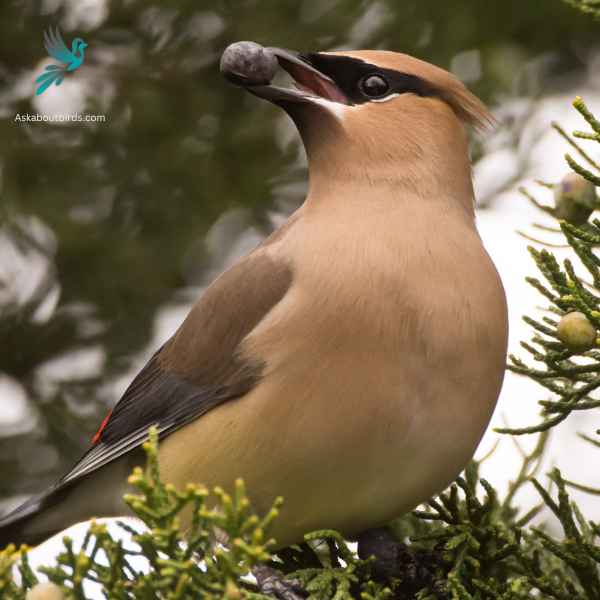
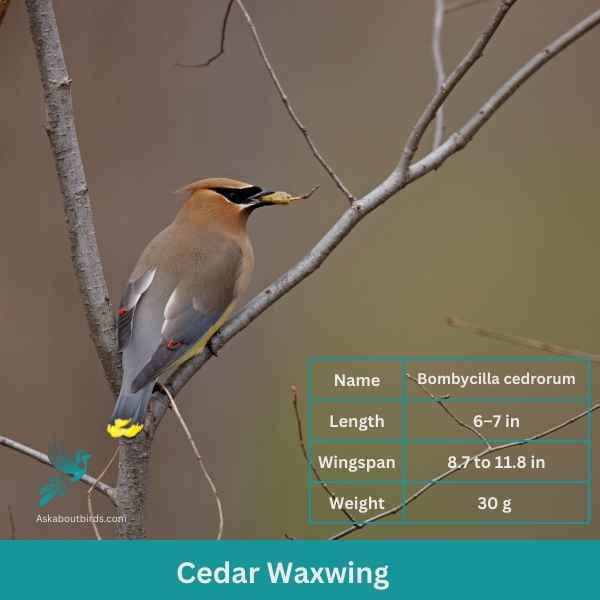
| Feature | Measurement |
|---|---|
| Scientific Name | Bombycilla cedrorum |
| Length | 6–7 in |
| Wingspan | 8.7 to 11.8 in |
| Weight | 30 g |
The Cedar Waxwing is a sleek, medium-sized bird that can be found across North America. It’s named for its unique red, wax-like wing tips and its fondness for the small cones of the Eastern Red Cedar. The bird has a crest that often lies flat and droops over the back of the head. It’s easily recognizable by its soft, silky plumage, which is pale brown on the head and chest fading to a soft gray on the wings. Its black mask edged in white, and bright yellow tail tips are other notable features.
Cedar Waxwings are social birds that you’re likely to see in flocks year-round. They feed on fruits and berries, often passing them from one bird to another down a row sitting in a tree. They will also fly out to catch insects in flight. Their high-pitched calls are a common sound in summer forests and suburban gardens.
Black Phoebe

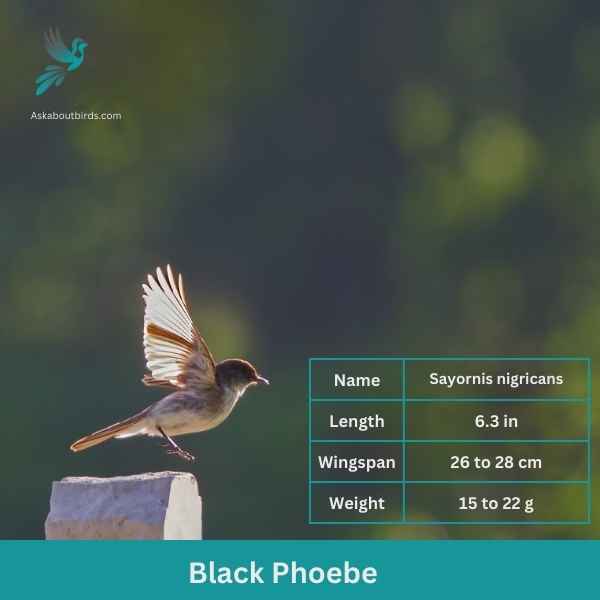
| Feature | Measurement |
|---|---|
| Scientific Name | Sayornis nigricans |
| Length | 6.3 in |
| Wingspan | 26 to 28 cm |
| Weight | 15 to 22 g |
The Black Phoebe is a distinctive flycatcher native to the western parts of North and South America. It is known for its striking black and white plumage – a sooty black body and head with a contrasting white belly. This bird is often seen perched on a low branch near water, flicking its long tail as it looks out for flying insects to catch mid-air, a behavior typical of the flycatcher family.
The Black Phoebe favors habitats near water and is frequently found around ponds, streams, or coastal areas. It also adapts well to human habitation and can often be seen in suburban or urban areas. The Black Phoebe builds its mud nest under bridges, eaves, or similar overhangs, usually near or over water. It has a soft, repetitive call that is often heard before the bird is seen.
Belted Kingfisher

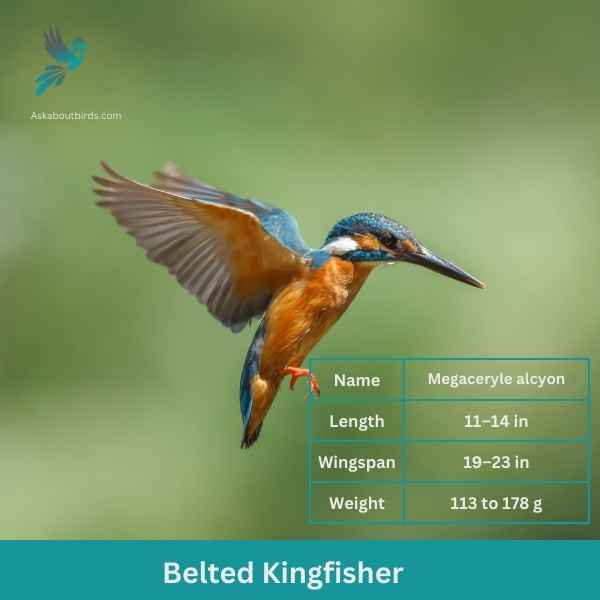
| Feature | Measurement |
|---|---|
| Scientific Name | Megaceryle alcyon |
| Length | 11–14 in |
| Wingspan | 19–23 in |
| Weight | 113 to 178 g |
The Belted Kingfisher is a distinctive bird found across much of North America. This medium-sized bird has a large head with a shaggy crest, a strong bill, and a broad white band, or “belt,” across its chest. Males are slate blue-gray with one white “belt,” while females are brighter, featuring a second, chestnut-colored “belt.” Belted Kingfishers are often found near water, including rivers, lakes, ponds, and coastal waters, where they feed primarily on fish, diving headfirst into the water from a perch to catch their prey. They are also known to eat crustaceans, insects, small mammals, and reptiles.
Unlike many bird species, female Kingfishers are more brightly colored than males. The Belted Kingfisher’s call is a loud, rattling sound that can often be heard before the bird is seen. These birds nest in burrows, which they excavate in earthen banks, usually near water.
FAQs on birds that look like bald eagles
What is the bird that looks like a bat flying?
The bird species that resembles a bat in flight is the chimney swift. These birds have a wing shape and bat-like flight that allows them to maneuver swiftly through the air. They are known for their ability to catch flying insects while in flight and build their nests inside chimneys. Although they may resemble bats while flying, chimney swifts are indeed birds, not mammals.
How do you tell if it’s a bird or a bat?
Distinct features can aid in discerning bats from birds. Bats fly in a manner distinct to birds, demonstrating a bat-like flight pattern, often flying erratically due to their wing shape designed for catching insects. Additionally, bats are nocturnal creatures, active at night preying on insect populations, unlike most bird species. While birds bear feathers, bats’ wings are skin-like structures, not feathered. Observing where these creatures rest can also provide clues; bats typically hang in dark places like chimneys, while birds build nests in trees or similar structures.
What flies like a bat but is not a bird?
The Common Nighthawk, a bird species, displays a flight pattern similar to bats. This nocturnal bird is often mistaken for a bat due to its erratic, bat-like flight as it feeds on insects. Common Nighthawks, like bats, are also drawn to insect populations at dusk. However, they can be distinguished from bats by their physical features such as feathers and their distinctive wing shape.
Is a nighthawk a real bird?
Indeed, the Common Nighthawk is a real bird species native to North and South America. Unlike bats, Common Nighthawks, along with other bird species such as the Barn Swallow and Chimney Swifts, build nests for protection and breeding. They have a unique wing shape that contributes to their bat-like flight, and they primarily feed on insects, similar to bats. The sound of air rushing over their wings during their dive for prey is a distinct characteristic of these birds.
How do Common Swifts and bats compare in their flying and nesting habits?
Common Swifts and bats exhibit a fascinating comparison in terms of flying and nesting habits. Both species are superb fliers. Swifts, however, often display a smoother gliding flight, while bats exhibit more erratic, dive-filled flying patterns due to their echolocation capabilities used to locate food. When it comes to nesting, common swifts usually nest in hollows of trees or in human-made structures within cities. Bats, on the other hand, prefer dark, secluded locations like caves or the hollows of old trees, sometimes forming colonies. Swifts feed mostly during the day, unlike bats that are primarily nocturnal, feeding at dawn or dusk.





